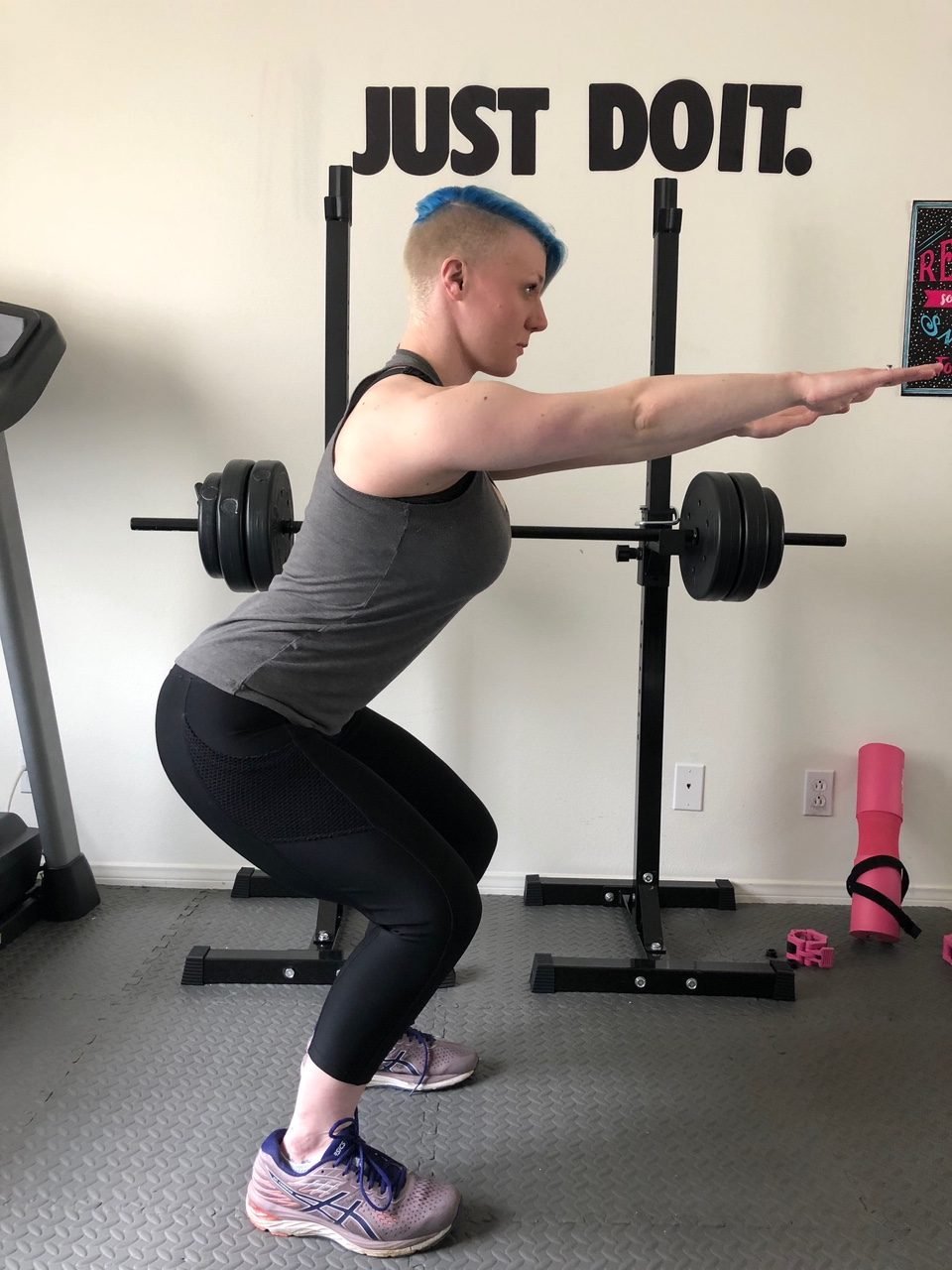Tips For Getting the Most Out of Your Squats
So many people squat in the gym. Many seem to only build up their quads with squatting. I have known other folks that have injured themselves due to practicing improper form on the squat rack. Furthermore, some individuals that are severely injured should avoid squats altogether.
Improve your squats
In this article, I will go over proper squat form, give a few tips on how to get the most out of your squats, and provide exercises that can shape/tone the lower half of one’s body if squats are not an option.
Proper Squat Form
First and foremost is to keep a neutral spine. This means that all three parts of the spine (cervical/neck, thoracic/middle, and lumbar/lower back) are stacked nicely on top of each other. The body is tall and the pelvis is not tucked under or pushed out.

Also, it’s important that when one descends into their squat that the chin remains tucked. Many individuals stick their chins out when squatting. This is incorrect.
Pay careful attention to your knees as well. They should be tracking over the toes. They should not be touched or placed outside the feet. Furthermore, your weight needs to be properly displaced.
To help with weight displacement, when squatting look down at your feet and knees. If your knees are blocking all of your feet and you cannot see your toes at all, then your knees are too far over your feet. In this position, you are increasing your risk of a knee injury.
If your knees land in the middle of your laces or shoes, then you are primarily engaging your quads during your squats.
If you shift your weight to your heels, and can slightly lift your toes, then you are not only engaging the quads, but also your hamstrings and glutes. Keeping your weight on your heels, in my opinion, allows for the most comprehensive muscle engagement and for all major muscle groups of the lower body to tone and shape.
If you are having trouble engaging your hamstrings/glutes and/or getting your weight on your heels, I highly recommend placing a 1-2 pound plate under each of your heels and performing your squats on the plates. This should help to ignite the hamstrings and glutes.
If you are having trouble keeping your knees over your toes, it’s a good idea to place a moderate-heavy resistance band above the knees during your squats. This will help train the body on proper knee placement and strengthen the muscles around the knees.
Lastly, if you are still unsure of your squat form, it’s important to stick to bodyweight squats until you feel more confident. This will greatly reduce one’s risk of injury.
What If Squats Aren’t An Option?
Folks with knee, back, and joint injuries (along with other injuries as well, I just named a few general ones here) might not be able to healthily perform squats.
And that’s totally okay! Squats are a great lower body exercise, but they aren’t the only ones out there.
Please note: I am not a doctor, and if you are injured please clear any and all exercises with your MD before attempting any type of exercise.
Glute Bridges
Glute bridges are a great way to tone and shape the lower half of your body. Simply lie on your back. Place your hands by your sides. The closer you can move your heels to your body, the more your glutes will be forced to engage. Drive your hips up to the ceiling. You should feel no strain on the neck or shoulders.
With this being said, there are many ways to progress glute bridges. You could hold weights above your chest and even add a press. There are one-legged glute bridges. You could put weights or plates on your thighs during the bridge.
You could utilize a stability ball or bosu. You could do a static bridge, and practice holding for X amount of time. You could also play with the rep range.
Seated Leg Press
Another great option for some injured folks is the seated leg press. This is more or less a seated squat that will help take pressure off the back. When on this machine, please keep in mind all the squat mechanics that were talked about at the beginning of the article.
Other Exercises
Other exercises that can help strengthen the lower body are flutter kicks, butt blasters, clams, and fire hydrants. If you are unsure about what any of these are, please feel free to reach out to me for more details.
Furthermore, strengthening the abdominals, specifically the lower abs, will promote proper squat mechanics. A strong core will help keep the body in a neutral spine with more ease.
Foam rolling and stretching tight muscles will help too. Tight hips often create compensations in the body and inhibit the depth of one’s squats.
Wrap-Up
I hope this article has given readers a wealth of information regarding squats and how to perform them safely!
Have a wonderful week and I hope to hear from you soon!
- Split Workout Routines: What Are They and Why Do Them? - January 14, 2024
- Practical Tips for Sticking To Your New Year’s Fitness Goals - January 10, 2023
- At Home Ab Workout: Why Work Out the Core? - March 3, 2022